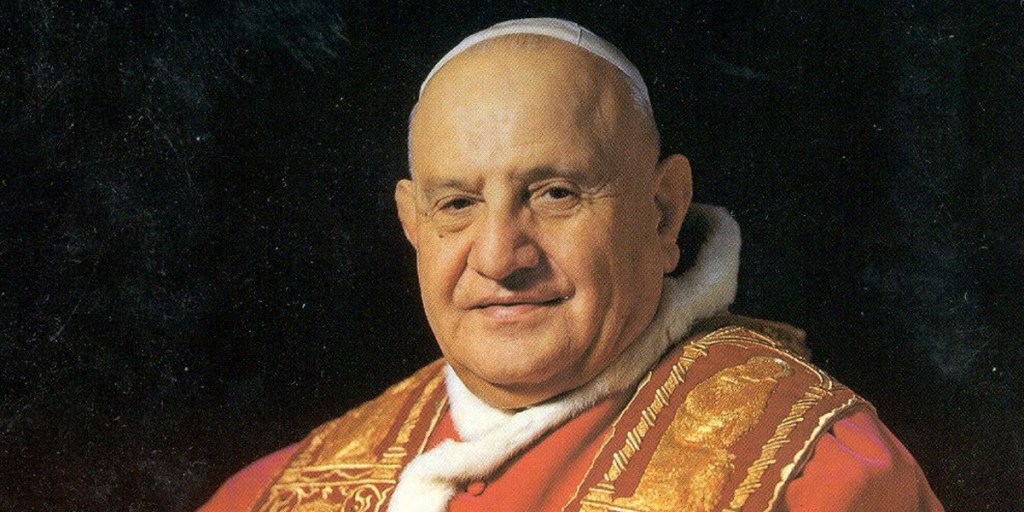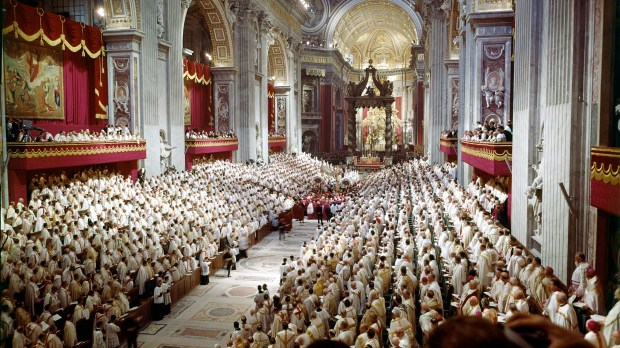“Venerable brothers and beloved sons. We announce to you, admittedly trembling a little with emotion, but at the same time with humble resolve, the name and proposal of a double celebration: of a diocesan synod for the city, and of an ecumenical council for the Universal Church.”
A surprise announcement
It was with these words — greeted with stunned silence by the 17 cardinals present in the chapter room of the abbey of St. Paul Outside the Walls — that Pope John XXIII announced his plan to open the Second Vatican Council. It was quite a shock: not a single cardinal applauded.
On the feast of the Conversion of St. Paul, January 25, 1959, the Pontiff went to the basilica of St. Paul Outside the Walls to attend the conclusion of the octave of prayer for Christian Unity. He then attended Mass, celebrated by the abbot of the Benedictine abbey adjoining the basilica, before joining the 17 cardinals present in the chapter house.

After listening to a presentation on the situation of the Diocese of Rome by Cardinal Vicar Clemente Micara, the Pontiff, elected just three months earlier, then delivered his address to the heads of the congregations of the Roman Curia.
Affirming his “dual responsibility as Bishop of Rome and Shepherd of the universal Church,” he expressed the wish for a “clear and definite correspondence of the new pontificate to the spiritual needs of the present hour.”
Changing times and new challenges
The Bishop of Rome went on to describe the effects of urbanization on the Italian capital, which had become a “veritable human beehive from which emerges an uninterrupted buzz of confused voices,” a sign of the changes that were transforming society and the world in the post-war period. While acknowledging that there are places “where the grace of Christ continues to multiply its fruits,” he expressed his sadness at the “abuse and compromise of the liberty of man.”
In those years, when Italy and the West were experiencing an economic boom and the birth of the consumer society, the Pontiff lamented seeing modern man turned “entirely to the pursuit of so-called earthly goods,” which are exalted by “the progress of modern technology.”
These developments, argued Peter’s Successor, do “grave harm” to what had constituted “the strength of resistance of the Church and her children” in the face of the risks of “fatal and disastrous divisions,” “spiritual and moral decadence,” and “the ruin of nations.”
With this in mind, he called for the faithful to “recall certain ancient forms of doctrinal affirmation and wise provisions of ecclesiastical discipline” that have borne fruit in the Church’s history.
It was then that the Supreme Pontiff announced the opening of an ecumenical council for the universal Church and a synod for the Diocese of Rome. He placed particular emphasis on the ecumenical dimension, which stems from a growing need for unity between Christian confessions.
An announcement that would shape the future of the Church
These two events, inspired by “the Spirit of the Lord,” should also lead to a “desired and long-awaited updating of the [1917] Code of Canon Law.” In the same spirit, John XXIII even announced the “forthcoming promulgation” of the Code of Canons of the Eastern Churches. These two projects did not come to fruition until much later, years after the Second Vatican Council (1962-1965): In fact, it was not until 1983 that the Code of Canon Law was promulgated, and 1990 that the Code of Canons of the Eastern Churches was promulgated.
Finally, the Pontiff asked the cardinals for their support and confidence, while urging them to be discreet. But a 20-line communiqué was finally published a few hours later by the Holy See. The information was picked up by all the newspapers, although the significance of the gesture was not always understood by journalists at the time.
“John XXIII has decidedly not finished astonishing us,” commented the Jesuit Robert Rouquette in the March 1959 issue of the journal Études, pointing out the irony of those who were announcing “a transitional pope, able to give the Church a few years’ rest.”
After a long period of preparation, the Second Vatican Council opened two and a half years later, on October 11, 1962.


